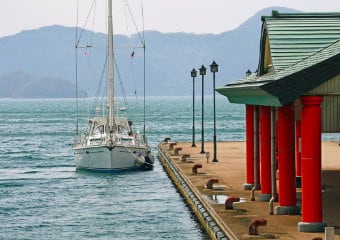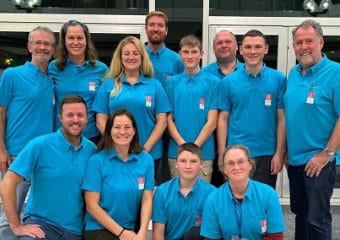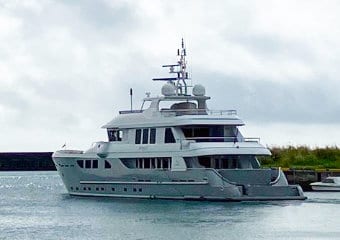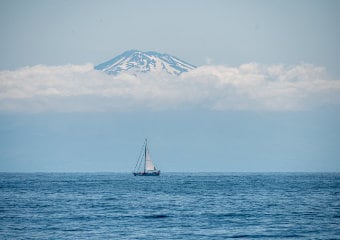Most of Japan's well-protected bays are either long-established fishing ports or aquaculture areas, and so anchoring is rarely possible. As a result, foreign cruisers – accustomed to spending most of their time on the hook – think that cruising in Japan must be difficult and expensive (assuming that they would have to stay in marinas most of the time).
In fact, though, it's quite the opposite. Japan is a very easy and cheap place to cruise precisely because there are so many fishing ports – that is where local cruisers prefer to tie up for the night. Except for fishing ports near large cities, there is almost always room, and moorage is free (I have only once paid a moorage fee in a fishing port -- US$5). Sheltered behind massive concrete breakwaters, they are usually well protected from wind and waves, and restaurants, shops, and hot-spring baths are normally within walking or at least bicycling distance. One cannot, however, make a reservation to moor at a fishing port and one can only stay for a few days.
In my six years of cruising Japan, I never once anchored. For me, the unique aspects of cruising Japan can be found on land – the friendly, helpful people, the interesting history and culture, the delicious food, the relaxing hot-spring baths, and so on. Conversely, anchoring in one beautiful bay in one country is not that different from anchoring in another beautiful bay in another country. So, although there are, in fact, some lovely anchorage spots (especially in the Seto Inland Sea, the Goto Islands, and the Ryukyu Islands), I always preferred to tuck into a fishing port at the end of the day.
Tips and Tricks to Make the Most of Japan's Fishing Ports
Here are a few tips and tricks to help you make the most of Japan's fishing ports.
For those unfamiliar with Japanese fishing ports, the biggest challenge is to figure out where, and where not, to moor. Just because a spot is empty does not mean that it is OK to moor there…. that may be the home for a fishing boat that will return later (often in early morning!). The first thing to look for upon arrival, therefore, is black-and-yellow steel bars along the top of the concrete wall – those generally (but not always) indicate non-reserved moorage spots for visiting boats. In any case, if there are fenders attached to the wall or fishing gear on top of the wall, then that is probably the regular moorage spot of a local boat.
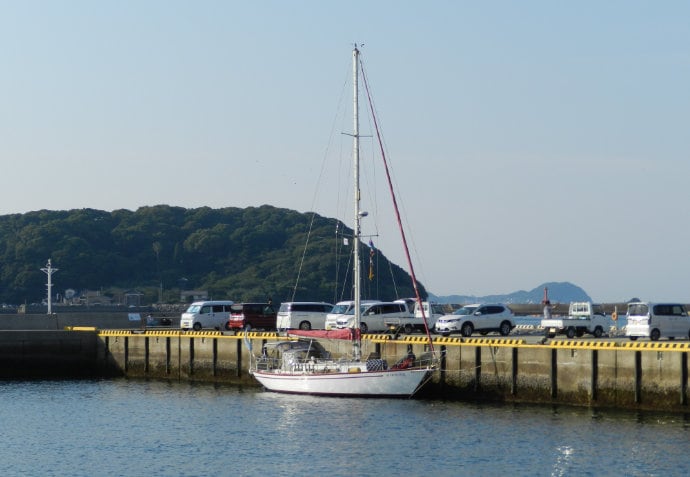
If you accidentally tie up in some other boat's spot, a local will often run up and ask you to move. If in doubt, try to find a local and ask if it's OK. To overcome the language barrier, point to your boat, raise your arms above your head to make a circle ("O"), and say "OK?" with a big smile. If not, they will often cross their arms in an "X". Or, if you are really in doubt, go to the office of the fishing co-operative and ask for permission. It is very unlikely that you will be asked to leave the port (never happened to me), but they might ask that you to move to some other spot.
Mooring in a fishing port almost always means side-tying to a concrete wall, and so to make that easier one should have:
- Several very large fenders and fender boards to keep the boat off the wall and, especially, off the large black bumpers that are usually bolted onto the wall (and with occasional exposed bolts!);
- Chains or heavy steel cables to attach to your dock lines so that they do not scrape along the edge of the wall;
- A ladder to get on and off the boat at low tide. The tidal range is usually two meters or less, but adding in a meter or two for a high wall means that one should have about a four-meter long ladder. (In the Seto Inland Sea, the tidal range is as much as four meters, but fortunately there are a lot of floating docks there so one rarely needs the ladder.)
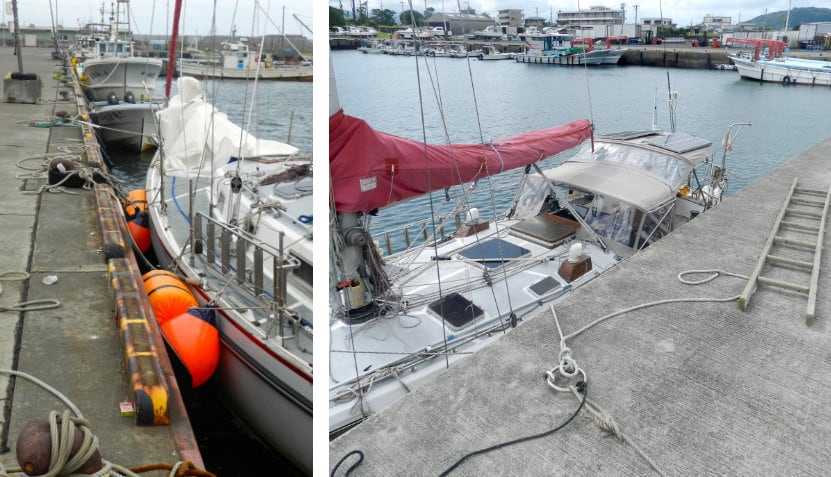
The attachment points for docklines in fishing ports are usually bollards of various sizes, although one sometimes sees steel rings. The bollards are occasionally set back from the edge of the wall by as much as a meter or two – for such cases, and given my poor cowboy lasso skills, I attached a large loop on to the end of a long pole and use that to snag a bollard at about midships and then pull the boat into the wall.
One can sometimes find ladders bolted on to the side of the wall. First tying your midship line to one of those ladders and then using it to climb up to set the other lines makes mooring very easy, especially when arriving at low tide.
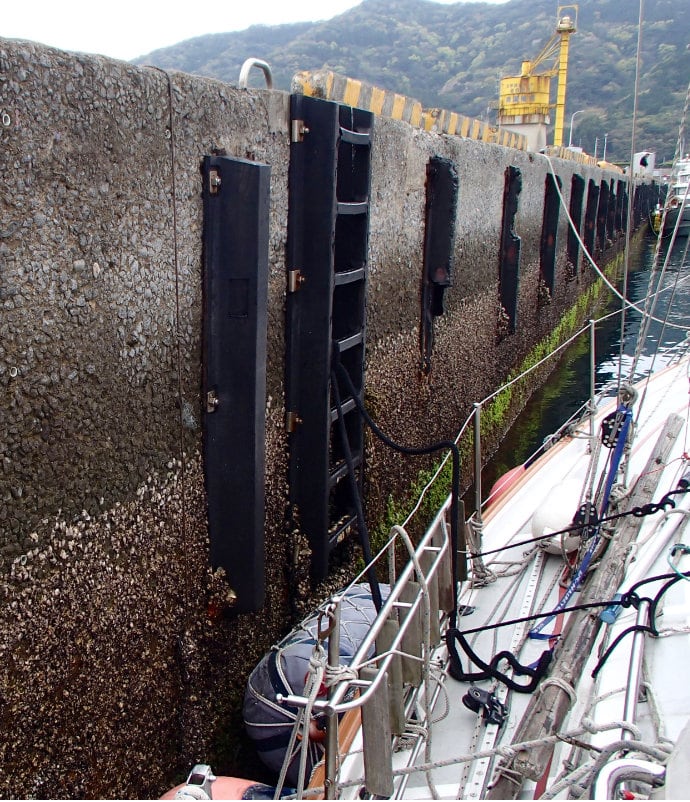
Another thing that makes mooring in fishing ports more manageable is that there are often steps cut into the concrete wall, making it easier to tie up and for getting on/off the boat regardless of the tide level.
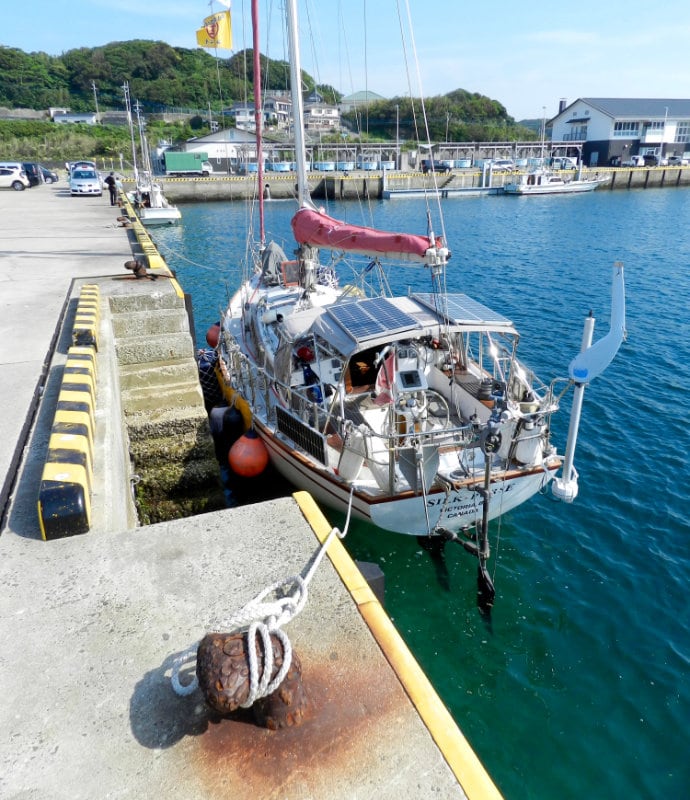
Two important points to remember about mooring in Japanese fishing ports are that:
- Not all concrete walls in fishing ports are flat all the way down – some have large indents or cut-aways that will snag fenders;
- In the Seto Inland Sea, at high spring tide the sea level can exceed the height of the wall, making fenders useless.
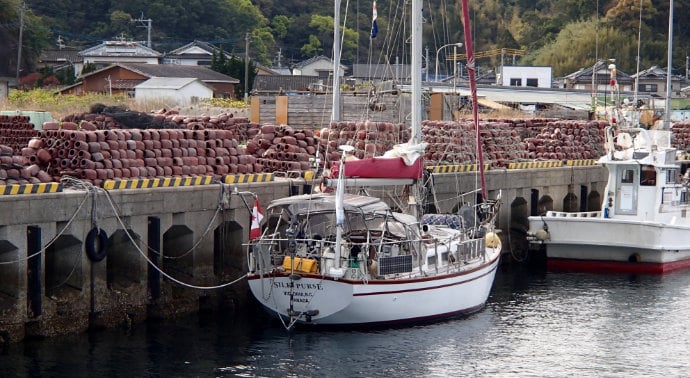
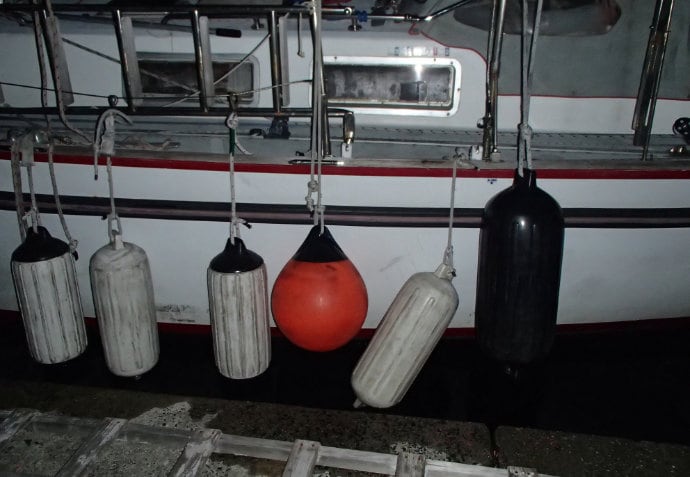
Mooring in fishing ports may be daunting at first, but you will quickly get used to what to do and not to do. And you will also quickly come to appreciate the convenience, security, hospitality, cost (zero!), and many other advantages of staying in fishing ports.
Other Moorage Options
Japan has many great, and generally cheap, moorage options. Read more on Many Moorage Options.
To learn how Konpira Yacht Services can help you enjoy the wonders of Japan's oceans, please feel free to contact us for more information.

